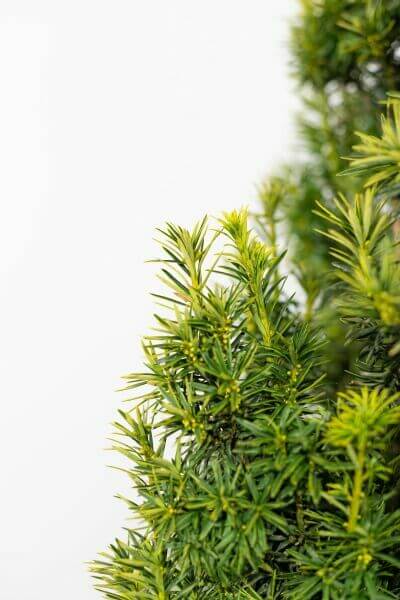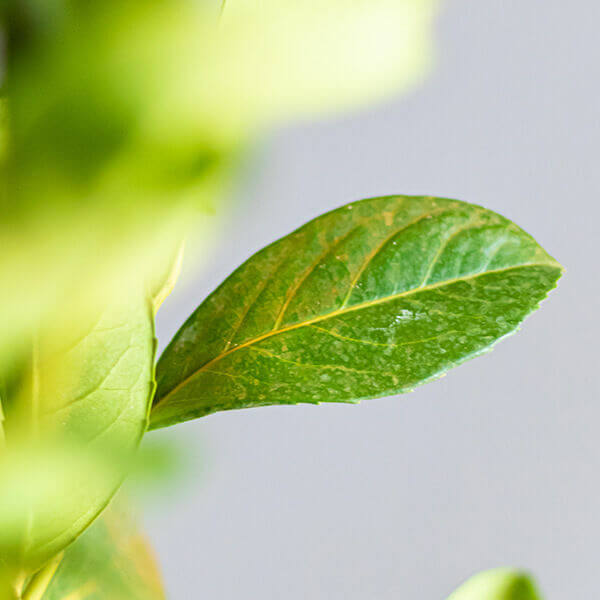Best Hedge Plants For Wet Conditions
Improve your garden's allure with lavish hedge varieties such as Yew (Taxus), Thuja, Laurel, Photinia, and Bamboo, commemorated for their structural integrity and ecological benefits.
Yew and Thuja provide evergreen protection and winter strength, while Laurel offers fast development and broad, fragrant leaves.
Photinia includes seasonal charm with its dynamic red foliage, and Bamboo provides a low-maintenance, peaceful atmosphere.
These hedges improve air quality, minimize sound, and produce tranquil, personal areas.
Proper planting, spacing, and upkeep make sure vigorous growth and eco-friendly harmony.
Explore how these lavish varieties can elevate your garden's charm and wellness.
Key Takeaways
Transform Your Garden With Lush Hedge Varieties
- Select Yew for its thick, evergreen development and unequaled longevity.
- Go with Laurel for its fast growth and broad leaves, guaranteeing fast privacy.
- Choose Photinia for its vibrant seasonal foliage, which turns a striking dark red.
- Make use of Bamboo for a low-maintenance, winter-hardy hedge with aesthetic appeal.
- Space plants 2-3 per meter and prune routinely for optimum development and health.
Popular Hedge Plants
When changing a garden with lush hedge varieties, it's important to think about popular hedge plants such as Yew, Thuja, Laurel, and Photinia due to their unique characteristics and benefits.
Yew (Taxus) is extremely respected for its longevity and thick, green growth, making it a prime choice for withstanding landscapes.
Thuja is kept in mind for its evergreen foliage and robust winter season durability.
Photinia adds seasonal vibrancy with red leaves that darken gradually, producing vibrant visual appeal.
Laurel provides fast growth and fragrant, broad leaves, ideal for quick privacy.
In Addition, Bamboo is an outstanding option for ambiance, offering a low-maintenance, winter-hardy option that boosts the garden's visual with its sophisticated, swaying walking sticks.
These selections cater to a range of horticultural requirements and preferences.
Benefits of Garden Hedges
Garden hedges use a plethora of advantages, making them a valuable addition to any landscape. These natural barriers are cost-effective to carry out and offer considerable wind protection, boosting air flow and contributing to sound decrease. The dense foliage of hedges like Thuja and Beech ensures personal privacy by obstructing visibility, developing a peaceful and secluded environment.
Hedges likewise play a crucial function in microclimate policy, providing a steady environment that fosters plant development and reduces temperature level changes. Their detailed leaf structures filter contaminants, enhancing air quality and adding to a healthier garden ecosystem.
Additionally, hedges excel in sound reduction, taking in and deflecting acoustic waves to lower ambient noise levels. This double functionality of supplying both visual and acoustic personal privacy enhances the general harmony and aesthetic appeal of any garden.
Planting and Upkeep Tips
For an effective hedge, precise preparation of the planting location is crucial. Guarantee the soil has correct pH and drainage to support strong root advancement.
Area the plants appropriately for the chosen species. Water the hedge often throughout its preliminary development phase, adjusting as required with seasonal modifications.
Implement a methodical insect control and illness prevention strategy, utilizing chemical or organic treatments when required. Frequently check for aphids, mites, and fungal infections.
Apply mulch to retain moisture and reduce weeds. Seasonal pruning promotes thick growth and air flow, vital for plant health.
Following these standards will help you cultivate a vibrant, well-kept hedge that improves the charm of your garden.
Spacing and Cutting Standards
Spacing and Cutting Standards
Correct spacing and cutting are vital for cultivating healthy, visually appealing hedges. Adequate spacing ensures each plant receives sufficient nutrients, light, and airflow.
Follow these guidelines for optimal hedge maintenance:
- Spacing: Position hedge plants 2-3 plants per meter to encourage robust development.
- Pruning Strategies: Routine pruning is vital for preserving preferred hedge height and shape. Trim new growth in summer and cut back older wood throughout winter season.
- Seasonal Care: Change cutting schedules and methods according to seasonal requirements to guarantee plant health.
- Hedge Height: Routinely screen and trim to maintain the desired hedge height and achieve consistent aesthetics.
Sticking to these steps will guarantee your hedge grows, boosting both the appeal and functionality of your garden.
Choosing the Right Hedge
Picking the Right Hedge
Picking the appropriate hedge involves examining elements such as mature height, foliage density, and ecological strength. Successful hedge plant choice needs understanding each types' growth characteristics and site-specific flexibility.
For instance, Yew (Taxus) provides excellent durability and dense development, while Thuja is noteworthy for its winter season durability. Additionally, thinking about maintenance requirements is vital; fast-growing types like Laurel or Privet demand routine trimming, whereas low-maintenance alternatives like Bamboo or Ivy might be preferable for those looking for very little upkeep.
Ecological factors such as soil type, light schedule, and moisture conditions should likewise guide the choice procedure. This cautious technique ensures the selected hedges will thrive, offering both practical and visual benefits to the garden landscape.
Delivery and Planting Suggestions
To ensure your hedge plants prosper, they need to be delivered by specialized couriers and planted without delay upon arrival.
Follow these essential steps for effective planting:
- Soil Preparation: Improve the soil with organic matter to enhance drain and nutrient content.
- Planting Depth: Create a trench twice the width and equivalent to the depth of the root ball.
- Watering Strategies: Water thoroughly after planting, keeping the soil consistently damp however not filled.
- Mulching: Use a layer of mulch to keep moisture and reduce weeds.
Customer Support and Service
Provided the important function of prompt assistance in horticultural pursuits, our customer support team is offered six days a week through telephone, email, and social media to offer professional guidance and quickly attend to any issues. Their devotion to fast action times makes sure customer satisfaction by resolving questions associated with plant health, ideal planting techniques, and maintenance schedules.

Communication Technique
Within 24 hours
Within 48 hours
This comprehensive support group, strengthened by an excellent 9.3/ 10 customer rating, highlights our commitment to improving the gardening experience for every single client.
Frequently Asked Questions
How Long Does It Take for Hedge Plants to Establish?
Hedge plants typically require one to three years to become completely developed, with the exact duration differing by types and growing conditions.
Reliable care throughout this important duration is necessary for robust development. Constant watering, watchful weed control, and suitable fertilizer application are critical in promoting strong root development.
For example, fast-growing types like Laurel might develop quicker, while slower-growing varieties such as Yew may take longer. Thorough upkeep accelerates the establishment process, leading to healthy and dense hedges.
What Are the very best Hedge Plants for Privacy?
The concern of the best hedge plants for privacy includes evaluating evergreen and deciduous choices.
Evergreen hedges like Thuja, Laurel, and Cypress supply year-round protection, ensuring constant personal privacy.
In contrast, deciduous hedges such as Beech use seasonal personal privacy, shedding leaves in chillier months.
Key upkeep pointers for privacy hedges include routine trimming, fertilizing in spring, and appropriate spacing-- generally 2 to 3 plants per meter.
Additionally, constant watering and persistent weed elimination are important for promoting healthy, dense development.
Can Hedge Plants Draw In Wildlife to My Garden?
Yes, hedge plants can attract wildlife to your garden by supplying important advantages like shelter, food, and nesting sites, thereby boosting local biodiversity. For circumstances, yew, holly, and laurel are outstanding for bring in birds, while ivy supports a variety of insects.
However, it is essential to note that there are some downsides, such as increased maintenance to handle pests and routine maintenance. Carefully choosing and maintaining hedge varieties can assist balance these advantages and downsides, ultimately promoting a sustainable and vibrant community in your garden.
Exist Any Flowering Hedge Plants Available?
Yes, there are flowering hedge plants offered that can boost the beauty of your garden.
For example, Elaeagnus, likewise referred to as Olive Willow, produces fragrant white flowers in the fall, adding a touch of beauty.
Photinia, another popular option, showcases vibrant red leaves that mature into a rich green, developing a vibrant visual effect throughout the seasons.
To ensure these plants prosper, it's necessary to practice proper pruning strategies and seasonal maintenance, such as trimming new growth in the summertime and cutting down in the winter season.
These measures will help keep the health and visual appeal of your flowering hedges.
How Do I Prevent Pests in My Hedge Plants?
To prevent pests in hedge plants, utilize natural insect control techniques and preserve appropriate hedge care. Present helpful pests like ladybugs, which victimize damaging bugs, to develop a well balanced ecosystem.
Regularly inspect your hedges for indications of problem and without delay remove any affected parts to prevent the spread. Ensure the health of your hedges by applying well balanced fertilizers and supplying appropriate water.
Use mulching to keep soil moisture and proper spacing to reduce plant tension and promote robust development. These practices collectively help in lessening pest problems and maintaining a healthy hedge.
Conclusion
In essence, selecting the ideal hedge varieties such as Yew, Thuja, and Laurel can change any garden into a serene sanctuary. These plants provide year-round greenery, enhance visual appeal, and deal practical benefits like sound decrease and wind security.
Appropriate planting techniques, precise spacing, constant watering, and seasonal trimming are vital for optimum growth.
Reputable delivery services and skilled consumer support ensure a smooth experience from purchase to planting, making it simpler than ever to elevate your outside space.
Garden hedges offer a wide variety of benefits, making them an important addition to any landscape. These natural barriers are hedge plants economical to implement and offer significant wind security, boosting air blood circulation and contributing to sound reduction. The thick foliage of hedges like Thuja and Beech ensures personal privacy by obstructing exposure, creating a tranquil and secluded environment.

Pruning Methods: Regular pruning is essential for keeping preferred hedge height and shape. Trim brand-new development in summer and cut back older wood throughout winter season.